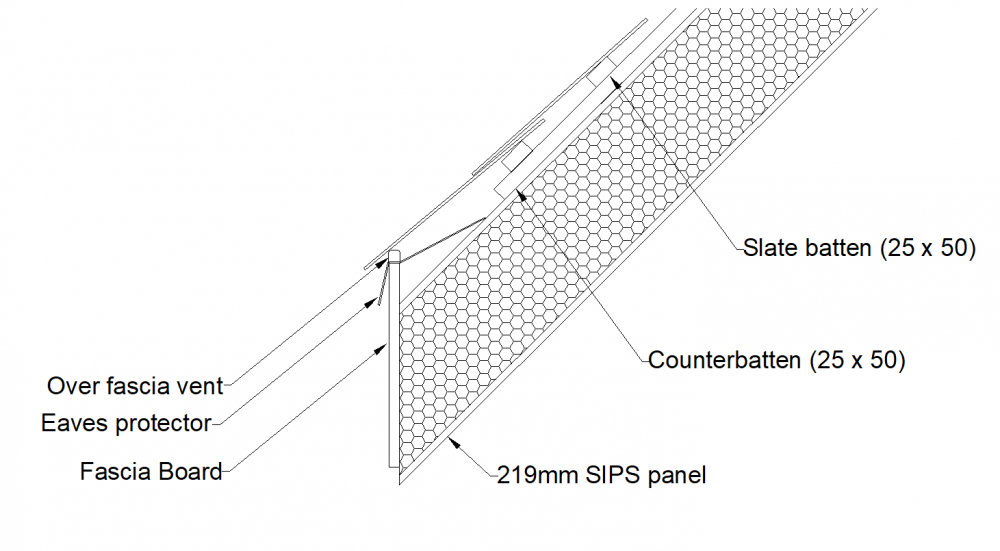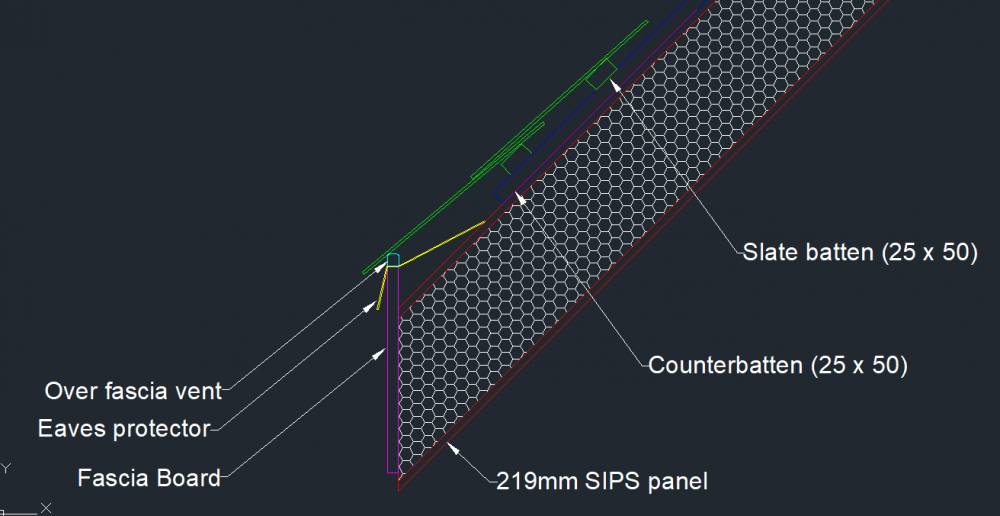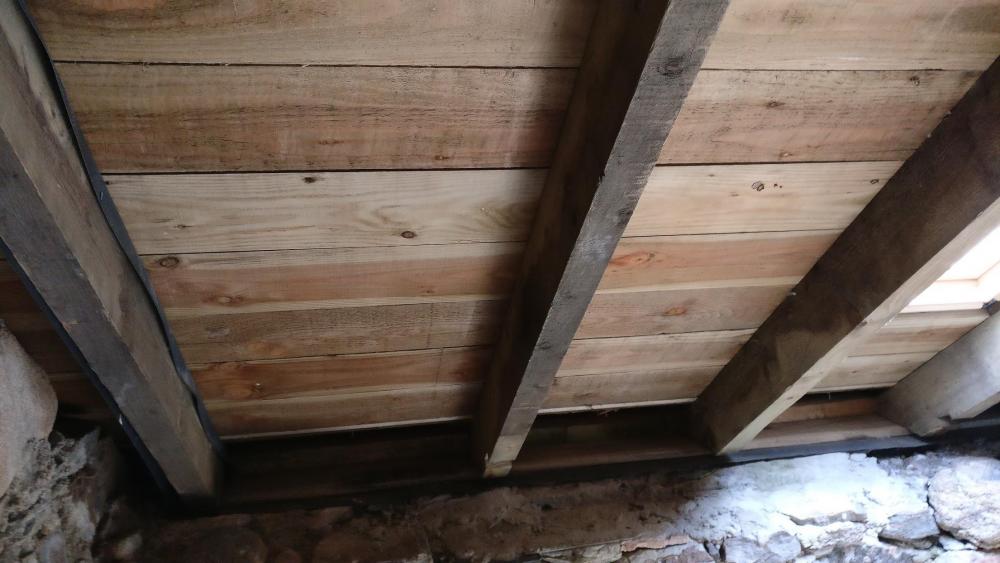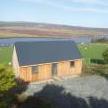Search the Community
Showing results for tags 'membrane'.
-
We’re building with SIPs and will have 100mm EWI on the walls and 80mm insulation on the inside of the roof. For the walls, we will use Glidevale Thermo Extreme breather membrane outside, then Glidevale Protect BarrAir membrane on the inside. Currently trying to work out if we use the same membranes for the pitched roof and would welcome any thoughts or suggestions.
-
Evening Folks, looking for some advice. Been building a 4 bedroom detached since March 2020. On the pre-planning conditions it stated we use a gas membrane compliant with CS2. I have used this all round the perimeter and above the engineering brick. However, I have used 1200 gage visqueen above & below the insulation and pinned the underfloor heating to it and lapped this onto the perimeter/gas membrane. I have found out this evening that I must get a Geologist to do a site survey in order comply with the pre-planning conditions (basically to check the gas membrane is correct)…. And pay £500 for the pleasure. I have a concrete pour happening Tuesday at 8am and the chance of me getting someone out is slim and if they do come I’m presuming it’s going to fail? I’ll also have to take back Up the underfloor heating and start the process again using gas membrane which doesn’t come cheap! please note - The gas trace was very very minimal. On the planning, we initially said 75mm scread for floor level but since I have changed to 100mm finished/polished confrere floor, does anyone know if this has any benefit to me given the above? any help/advice would be massively appreciated! thanks
-
My erectors are currently building my SIPS roof on the ground in cassettes then they will lift single bigger sections onto the roof with the crane there - which is fine and I'm ok with. But they are fitting the roofing membrane on these sections (laid horizontally and lapped towards the top as it should be) and then will lap it over the adjacent cassette joining sections, with the required horizontal lap. I was questioning this being ok as then there are these vertical joins which albeit would be similar to if you finished a roll then starting the next but should I be worried about this, I have asked them and they say it's the norm for them. This has raised questions for me on the SIPS fascia detail which I need to move along quickly so roofers can start. See drawings below which I sketched up - I have a few queries I ned help with: It's slates mounted on battens then counter battens (the English way, but done in Scotland!). Gutter detail omitted for clarity, membrane not shown either but theoretically it laps over the eaves protector. 1)Does this detail look right? 2) Does the over fascia vent go above or below the eaves protector? (I've seen it shown below, but that wouldn't make sense in this instance as it would be venting that small space only) 3) If the roofing membrane is already laid - do I pull it up back up to the counter batten then stick the eaves protector underneath, or do I just tape on a new bit of membrane so the water can run onto the eaves protector? or just tape the eaves protector down to the membrane? any guidance appreciated
-
My erectors are currently building my SIPS roof on the ground in cassettes then they will lift single bigger sections onto the roof with the crane there - which is fine and I'm ok with. But they are fitting the roofing membrane on these sections (laid horizontally and lapped towards the top as it should be) and then will lap it over the adjacent cassette joining sections, with the required horizontal lap. I was questioning this being ok as then there are these vertical joins which albeit would be similar to if you finished a roll then starting the next but should I be worried about this, I have asked them and they say it's the norm for them. This has raised questions for me on the SIPS fascia detail which I need to move along quickly so roofers can start. See drawings below which I sketched up - I have a few queries I ned help with: It's slates mounted on battens then counter battens (the English way, but done in Scotland!). Gutter detail omitted for clarity, membrane not shown either but theoretically it laps over the eaves protector. 1)Does this detail look right? 2) Does the over fascia vent go above or below the eaves protector? (I've seen it shown below, but that wouldn't make sense in this instance as it would be venting that small space only) 3) If the roofing membrane is already laid - do I pull it up back up to the counter batten then stick the eaves protector underneath, or do I just tape on a new bit of membrane so the water can run onto the eaves protector? or just tape the eaves protector down to the membrane? any guidance appreciated
-
A apex roof has been constructed with Klober breathable underlay that has been fixed to the outside of the roof. Do I need another layer inside the rafters between the insulation and the sarking, or vapor control layer? The roof will be fitted with 150mm thick insulation (Ecotherm PIR, or Actis Hybris) Note the roof is built on a 800mm thick cottage rock wall (granite)
- 1 reply
-
- underlay
- breathable
-
(and 3 more)
Tagged with:
-
I am looking for a word. What are the things called that you put under the bottom edge of old roofs to keep water out. They are like a membrane but just under the bottom row or two of tiles above the gutter? The issue I have is a damp patch on the ceiling below a low-pitch roof - suspect current conditions have blown water up under the tiles, or possibly a valley gutter which needs repair. I am going to have a look at it today or tomorrow. The tiles are double romans at a roof pitch of perhaps 25-30 degrees, and the valley is between an inner right angle corner. In accordance with the Law of Sod, it is above the car port but fortunately above the ground floor only. It may be politic to replace the valley gutter but I do not want to do the whole side of the roof if avoidable. Comments are very welcome. Cheers Ferdinand
-
I'm about to start installing the breather membrane onto my timber frame. This will be hung vertically and then fixed via battens every 600. Question- do I fix a horizontal batten at the top and bottom of each window opening?







